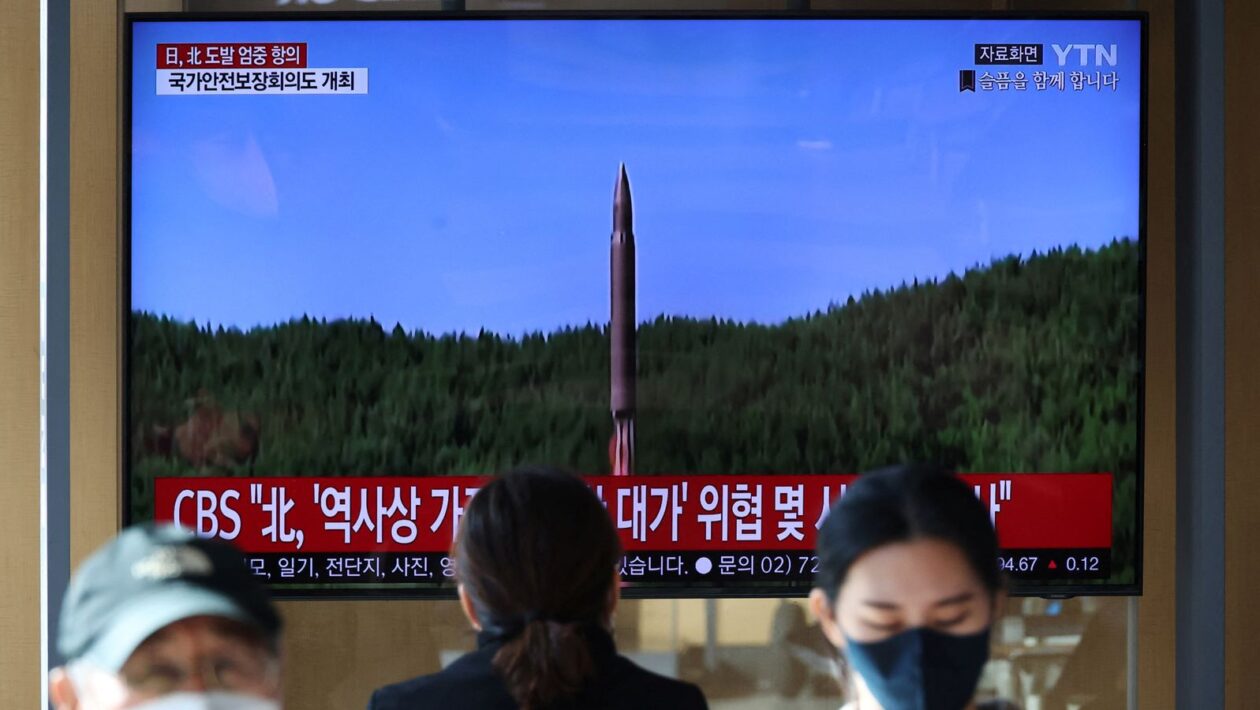[ad_1]

North Korea fired at least 17 missiles off its eastern and western coasts on Wednesday morning, according to South Korea’s military, with one landing near the rivals’ tense sea border.
Seoul quickly responded by launching its own missiles.
It was the most missiles fired by the North in a single day – and the first time a ballistic missile had landed near the South’s waters since the countries’ division in 1948.
“This is very unprecedented and we will never tolerate it,” South Korea’s Joint Chiefs of Staff said.
The missile landed outside South Korea’s territorial waters, but south of the Northern Limit Line (NLL), a disputed inter-Korean maritime border.
It landed around 35 miles from the South Korean city of Sokcho, on the east coast, and 100 miles from the island of Ulleung, where air raid warnings were issued.
“We heard the siren at around 8.55am and all of us in the building went down to the evacuation place in the basement,” an Ulleung county official said.
“We stayed there until we came upstairs at around 9.15am after hearing that the projectile fell into the high seas.”
Yoon Suk-yeol, the South Korean president, said it was an “effective act of territorial encroachment”.
South Korean warplanes fired three air-to-ground missiles into the sea across the NLL after Mr Yoon’s office pledged a “swift and firm response” so Pyongyang “pays the price for provocation”.
Read more:
North Korea test-fires cruise missiles that ‘hit target 1,240 miles away’
Kim Jong Un vows to strengthen North Korea’s nuclear operations
South Korea is in a period of national mourning after more than 150 people were killed in a deadly crowd crush in the capital, Seoul.
Hours before the missiles were launched, the North threatened to use nuclear weapons to get the US and South Korea to “pay the most horrible price in history” in protest over the two nations’ ongoing military drills that it views as an invasion rehearsal.
Washington said the drills were “purely defensive in nature” and that the US had made clear to North Korea that it harboured no hostile intent towards the country.
[ad_2]

